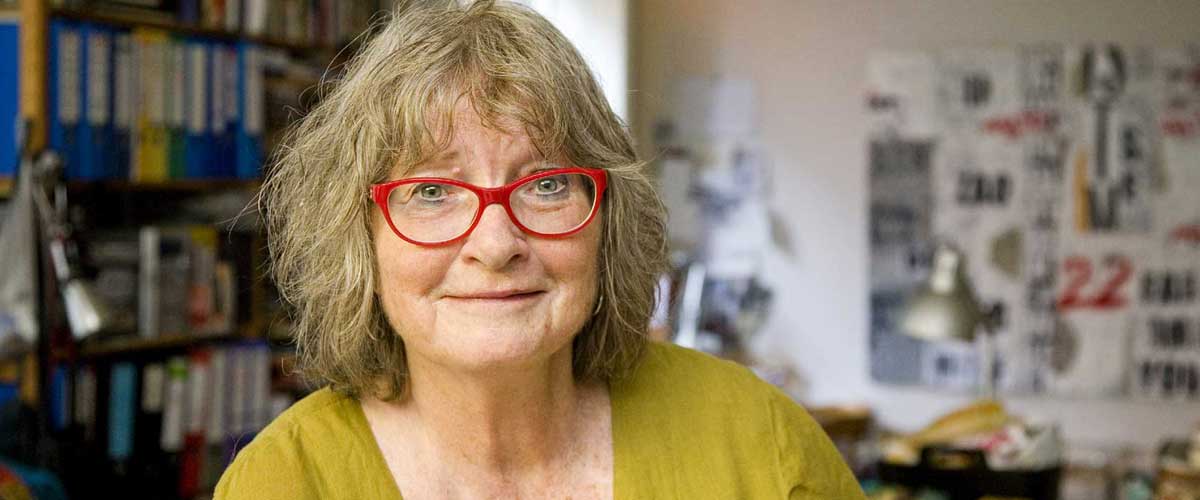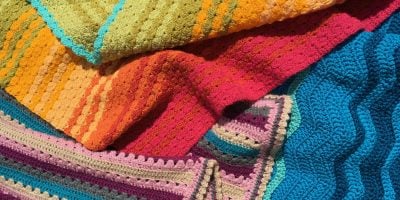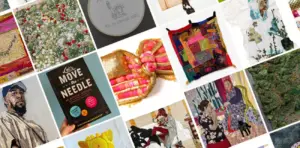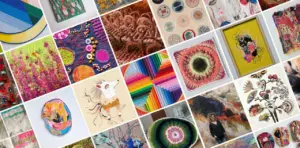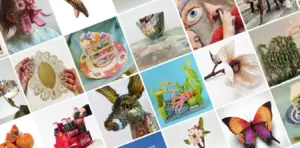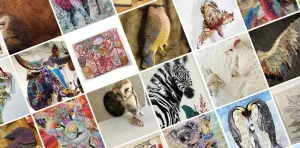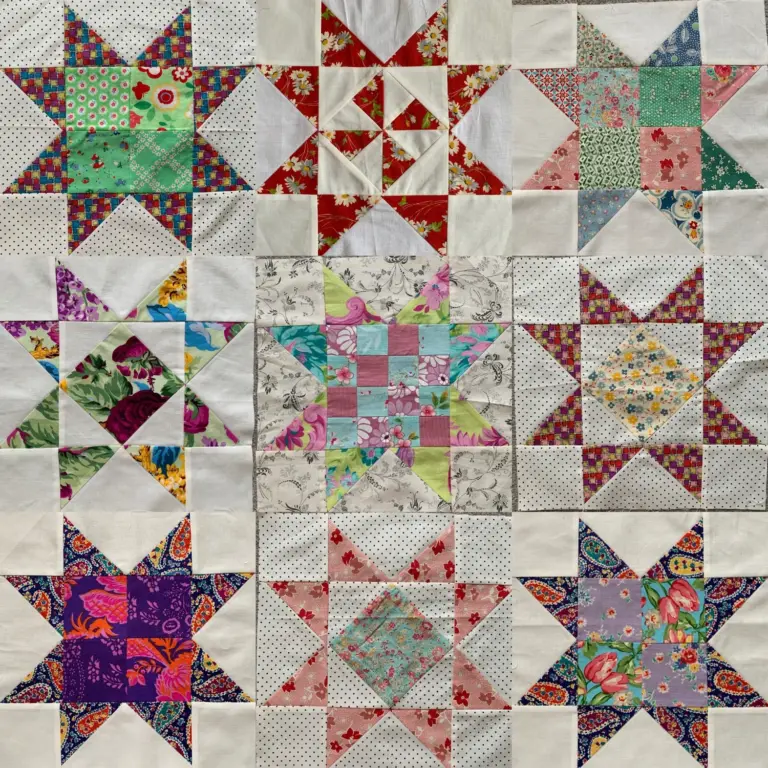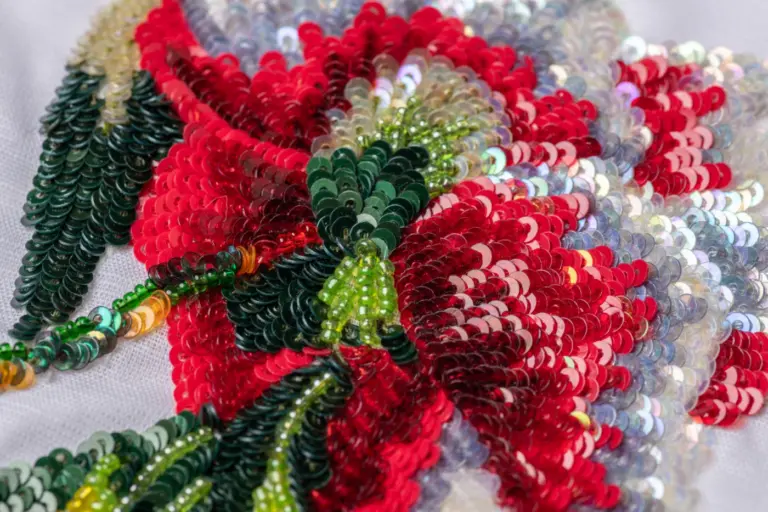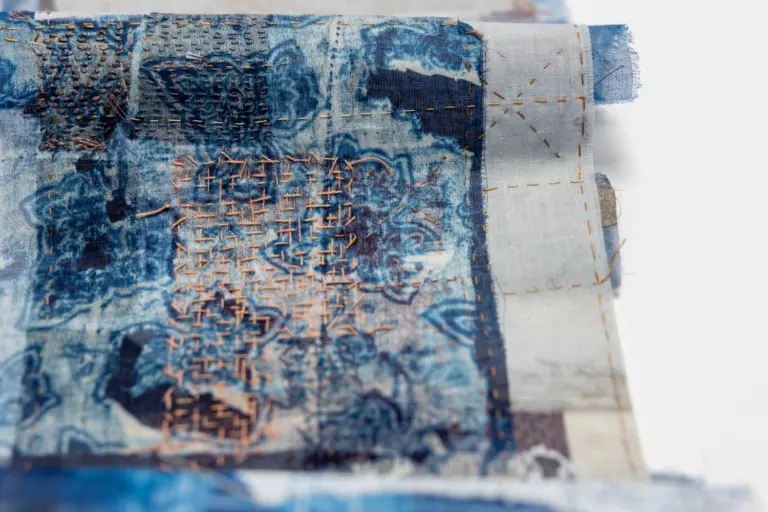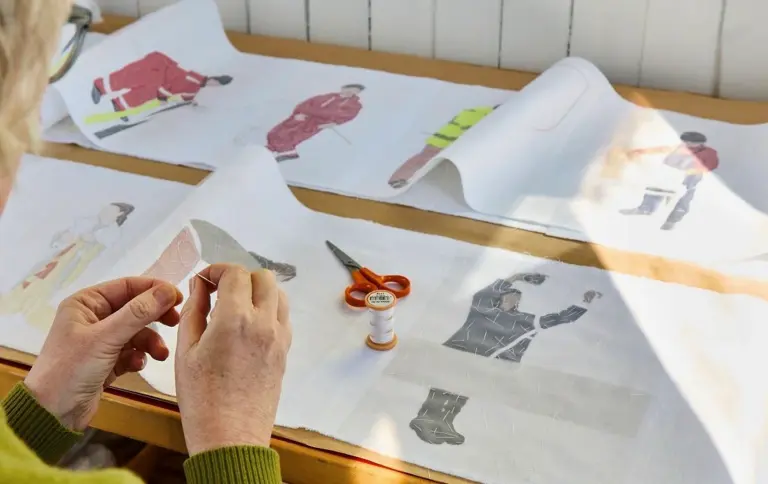The work of mixed media artist Jette Clover is distinguishable by her signature use of text – a nod to her earlier years in Journalism? The truth is Jette has always been fascinated by the written word and the legacy it leaves behind once it’s been used to communicate a message. For Jette, text is her trademark: Used to convey meaning and added depth by printing and stitching the words.
Having exhibited across the USA, Europe, Asia and Australia Jette Clover is now a globally renowned artist and a teacher in high demand. She has been a member of Quilt Art since 2000 and was a member of the Art Quilt/New York group for ten years. She continues to serve as a member of the Surface Design Association (SDA) and the Studio Art Quilt Association (SAQA) for which she served as its international representative for Europe and Israel for three years.
Tell is a little about any current projects you are working on.
I am always working in series. I usually have one series of small pieces and one series of big pieces going. I like to work both in an intimate scale and on a wall scale. Working small is very freeing, and working small encourages me to work spontaneously, which I then take with me to my bigger pieces.
At the moment I am working on a small series titled Ponderings – still exploring the color white. They are 20×20 cm collage constructions combining paper and fabric and hand stitched. The paper fragments are from old handwritten postcards.
And I am working on # 14 in the series Words (100×100 cm), expressing my sadness about the disappearance of handwritten letters and penmanship. After I have written on the fabric, I paint over it with white acrylic paint, borrowing from Japanese culture, where the color white symbolizes sorrow. I then tear the fabric into strips, sew it back together again and collage other strips on top. The strips allude to the linear construction of writing, but also to the fragmentation of communicating with instant messages on smart phones.
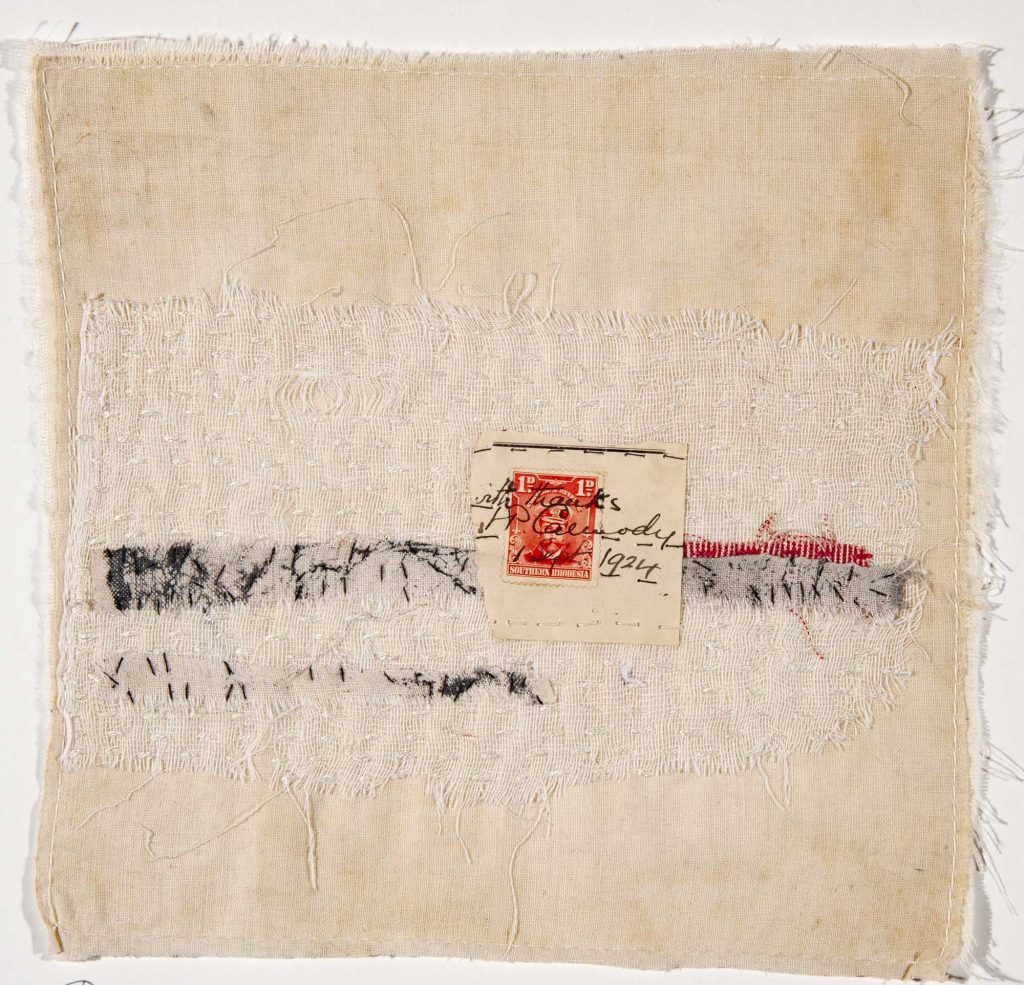
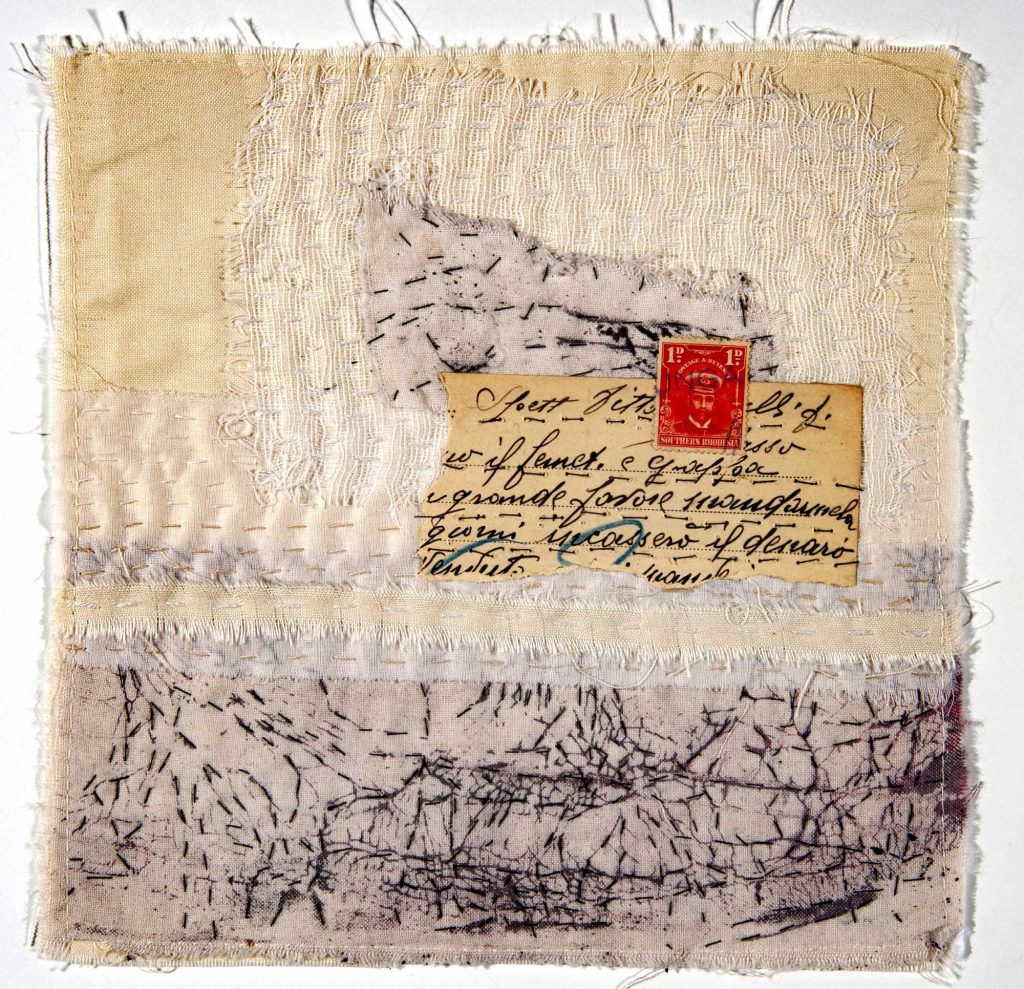
What was your first memory of creating art – what started you off on your current path?
During my childhood I was always writing – stories, plays, diaries, letters, etc.
I would sometimes make illustrations, but I wasn’t encouraged, because my drawings weren’t ’good’, not very realistic renderings. So I pursued my writing and became a journalist. I did spinning and weaving as a hobby, and later living in California in the 1970’s, I was introduced to monumental fiber art and to surface design. I would have loved to study textile art, but at that time the university textile departments were all about science and techniques, not about art, so I got a degree in art history.
I am always trying to balance being a maker and a historian and teacher. I taught art history, ran a fiber art gallery for five years and worked for more than ten years as a museum curator, before I became a full time studio artist in 1998 and teaching workshops and masterclasses.
I feel quite comfortable with this duality. Not only is practical all my art work referring to writing, I also start every morning writing for ½ hour. Afterwards I make a small paper collage – sort of training my eyes and hands to work together – and I feel that this daily routine develops content in my art work and confidence in my intuition for arranging lines, shapes, colours and textures.
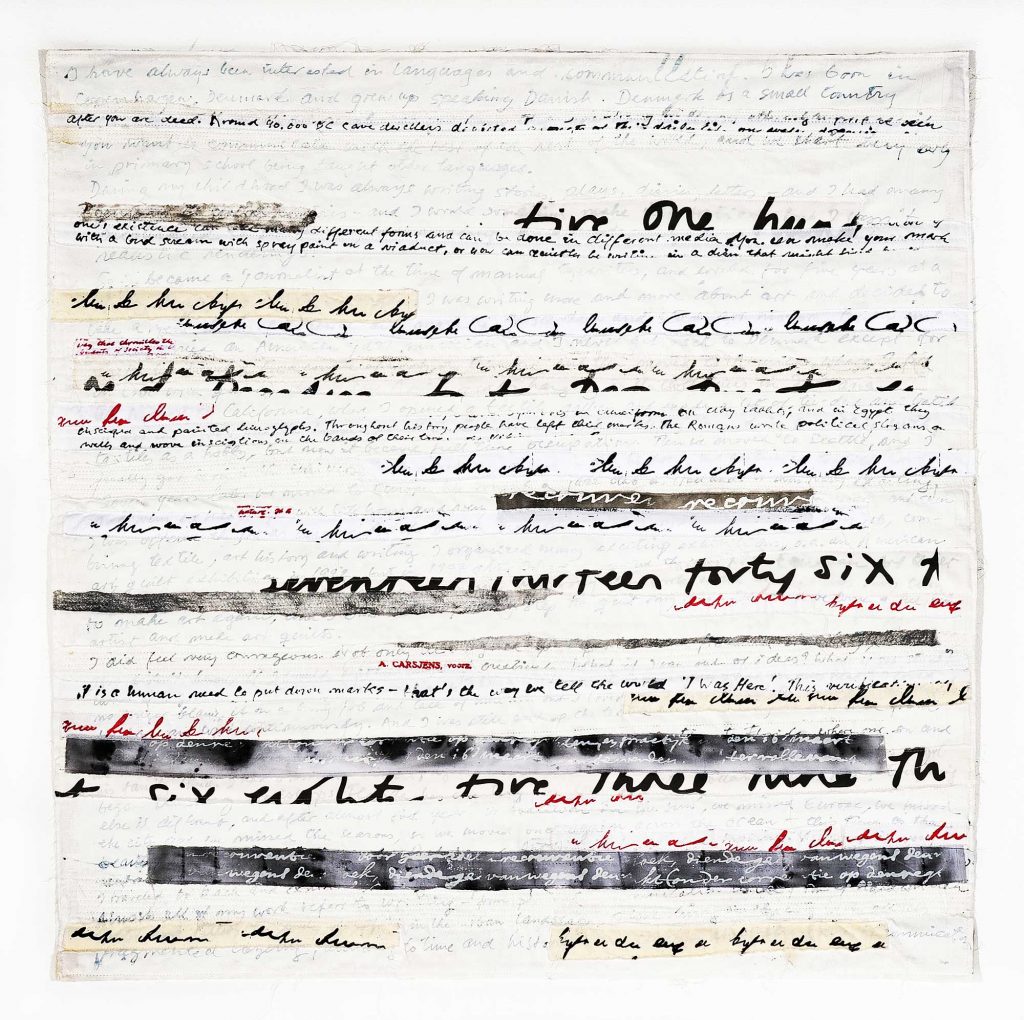
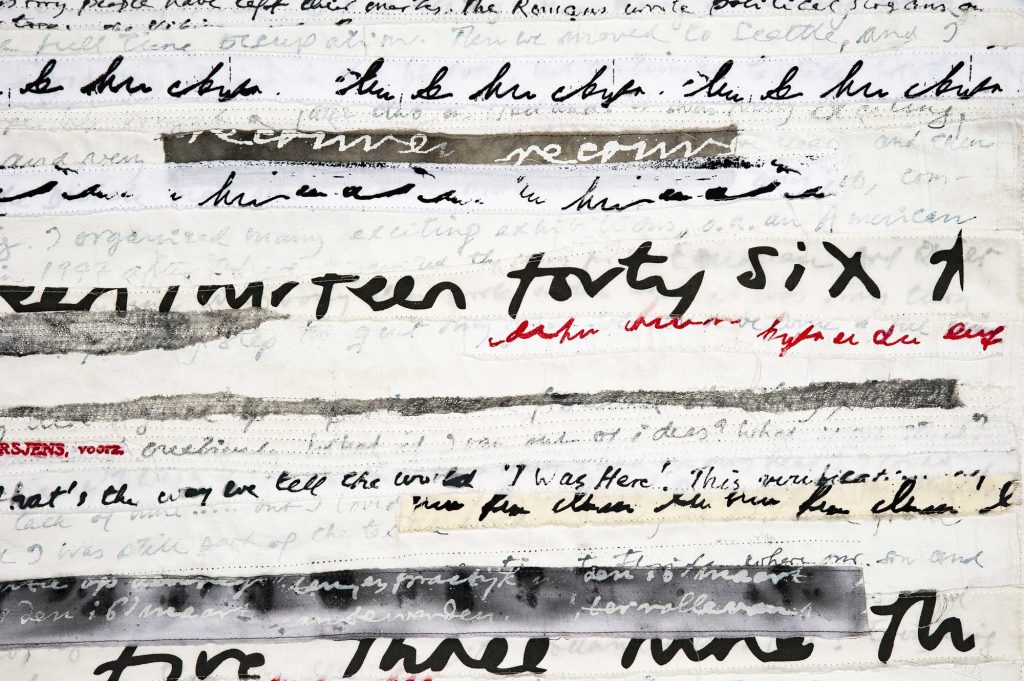
Where do you usually look for inspiration when starting a new piece?
Writing continues to be my main source of inspiration. Writing becomes a tool to reflect on how language shapes our memories and identities. There are so many cultural and social aspects to words and communication. Text is everywhere in our daily lives – posters, packaging, labels, maps, street names, advertisements, magazines, newspapers, television, the Internet – all using words to convey a message.
I am inspired by the graphic forms of printed text, the intimate quality of handwritten letters, and the display of distressed posters, overlapping advertisements and crude graffiti in the urban landscape.
I like simplicity and subtle colors. Being from Northern Europe, I am very fond of misty, grey winter light, and for the last ten years I have explored a very limited color range of white, grey and black with accents of red and yellow – though some of the pieces in my series Small Notes are very colorful, inspired by the personalities depicted on the stamps.
I have numerous sketchbooks in which I collect images, drawings and writings. These books are my collected thoughts and inspirations. They are really ‘me talking to myself ’ and I can spend hours just looking through them, before I start gathering materials for my next piece.
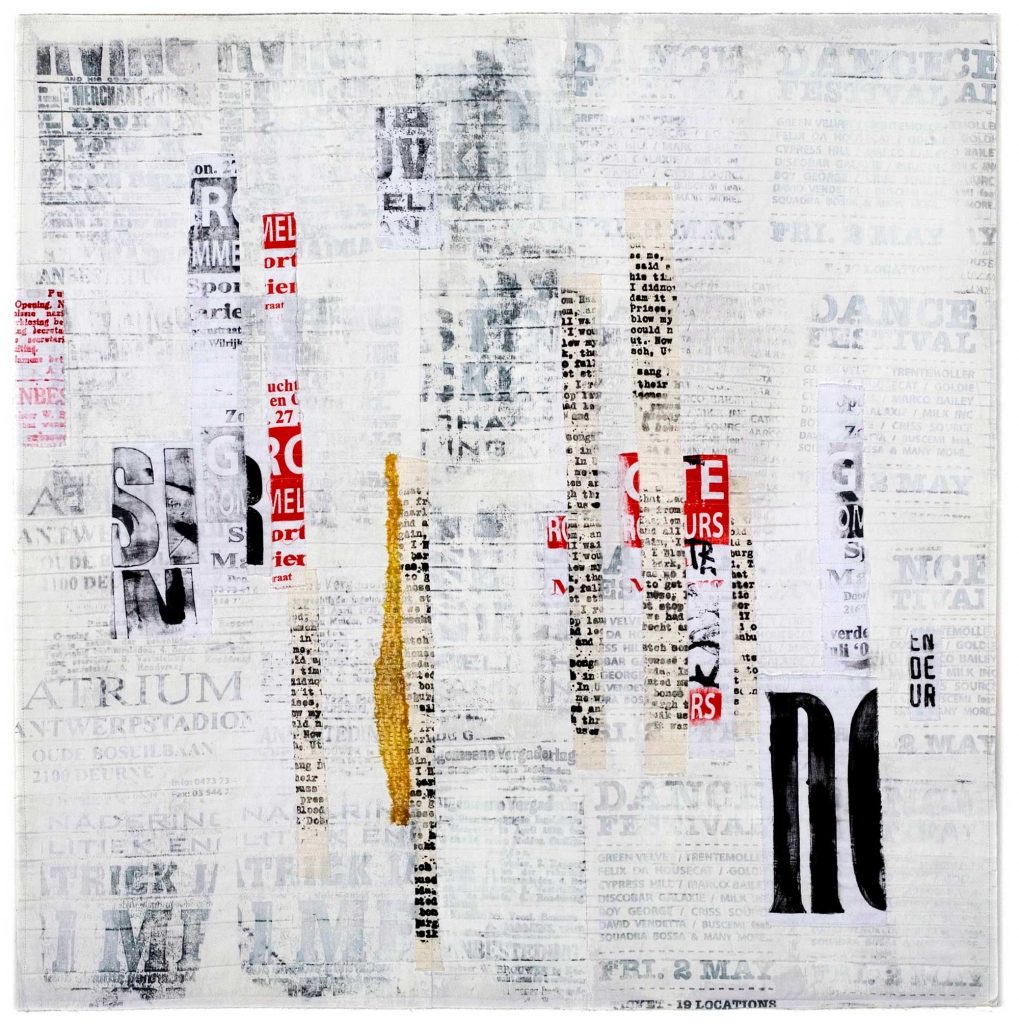
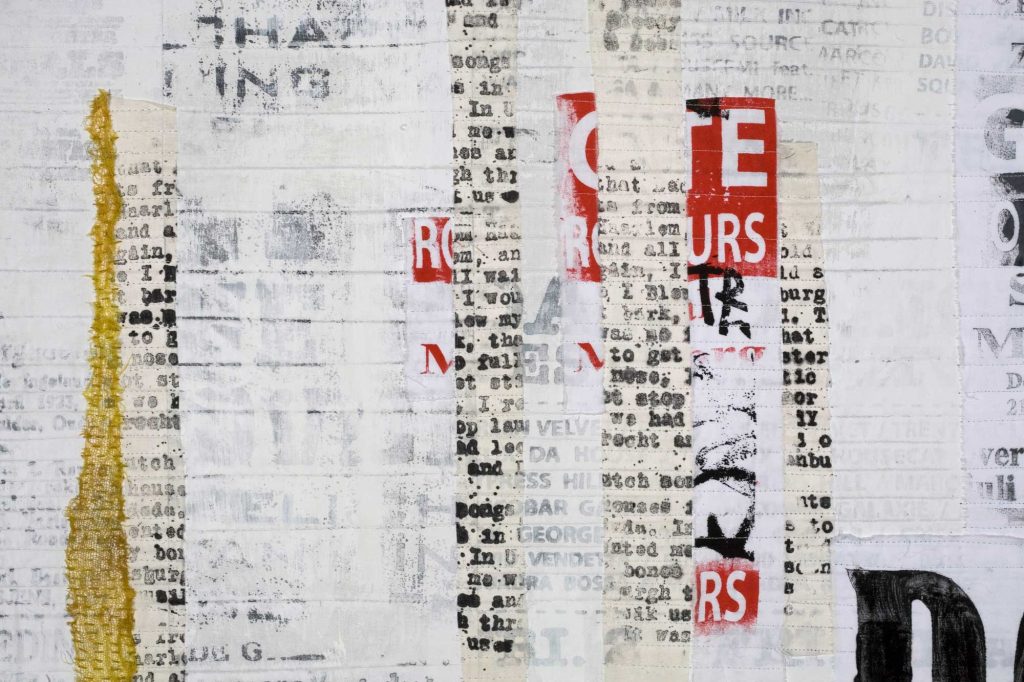
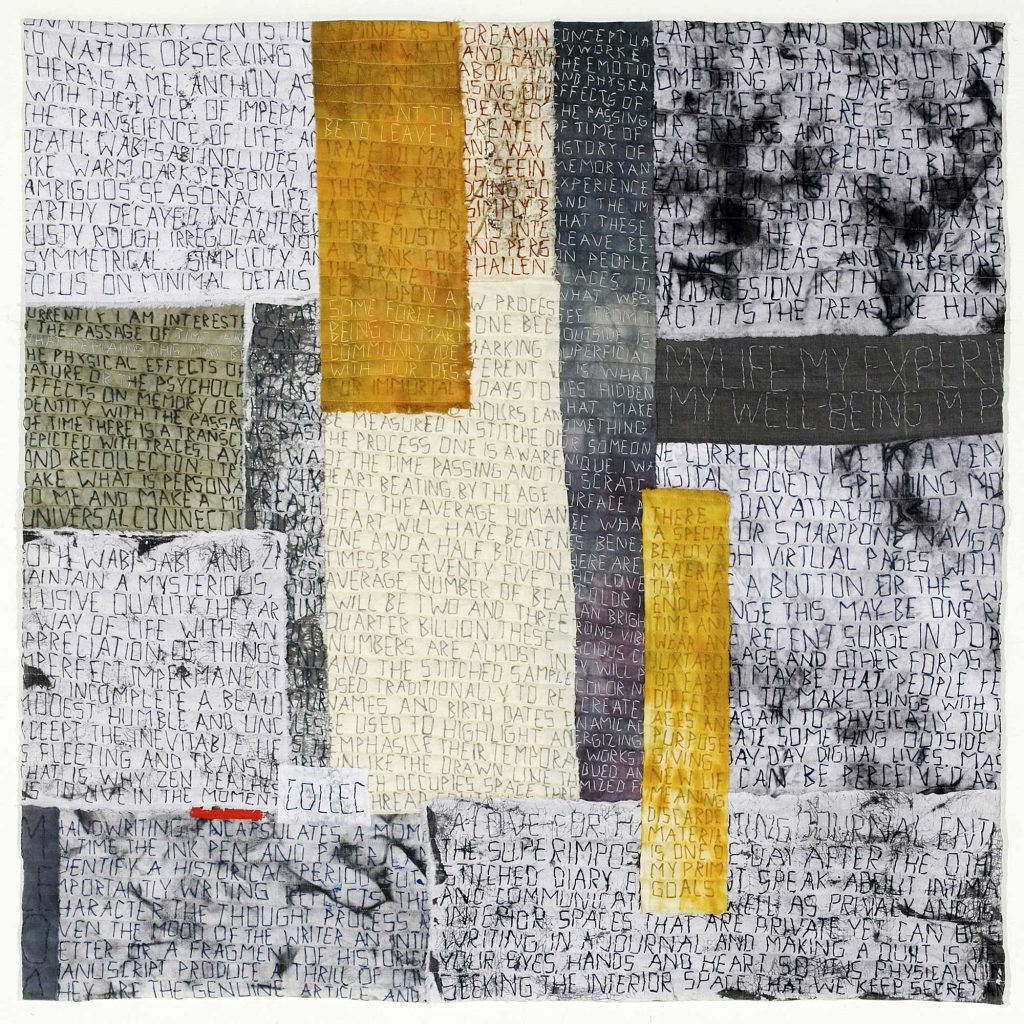
As someone who is trained in journalism and art history, how do you find these subjects making their way into your current work?
The step for me to use lettering in my art work was quite natural, because of my journalist background. I like words, both because of their graphic forms and their ability to express meaning. Words matter. Living in different countries and having to speak different languages daily, make you acutely aware of the importance of communication and the need to understand and to be understood.
I work equally with paper and fabric and a variety of surface design techniques.
I really like an element of chance such as in discharging and rusting. Surfaces to respond to. The element of uncertainty is also what drives me to the next piece.
The American artist Robert Motherwell has said it very well: ’Art is an experience, not an object’.
For me the creative process is a physical act. The touching, the gathering, the cutting and tearing is very important to me. It is about having material in my hands and moving it around, until my gut feeling says ‘that’s it’. If I had to make a plan first, I wouldn’t be interested in making the piece. I would miss a certain playfulness of the moment and the freedom to ‘change my mind’.
Collage is the ideal medium for me, but I definitely feel rooted in the quilt tradition – even though I never made a traditional quilt – because of the recycling, the layering, and the stitching.
My journalist days were pre-computer, and I wrote on an old typewriter with no possibility of making corrections and additions. I would cut and re-cut and paste my typed pages and often end up with many meters of pasted paper that I then would re-type into a normal manuscript. I honestly think that this cut-and-paste way of working when writing was the beginning of my love of the collage medium. I work similarly with fabric and stitching, and I actually still write that way.
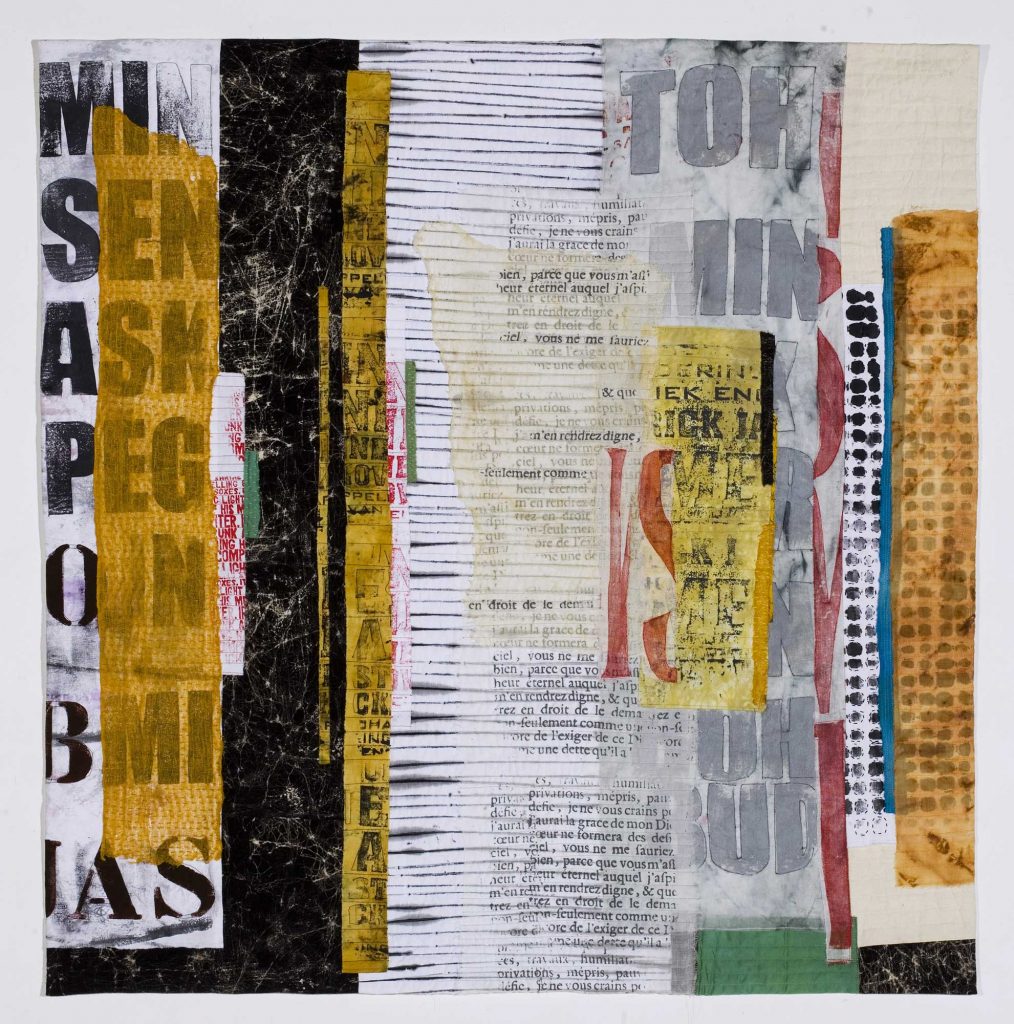
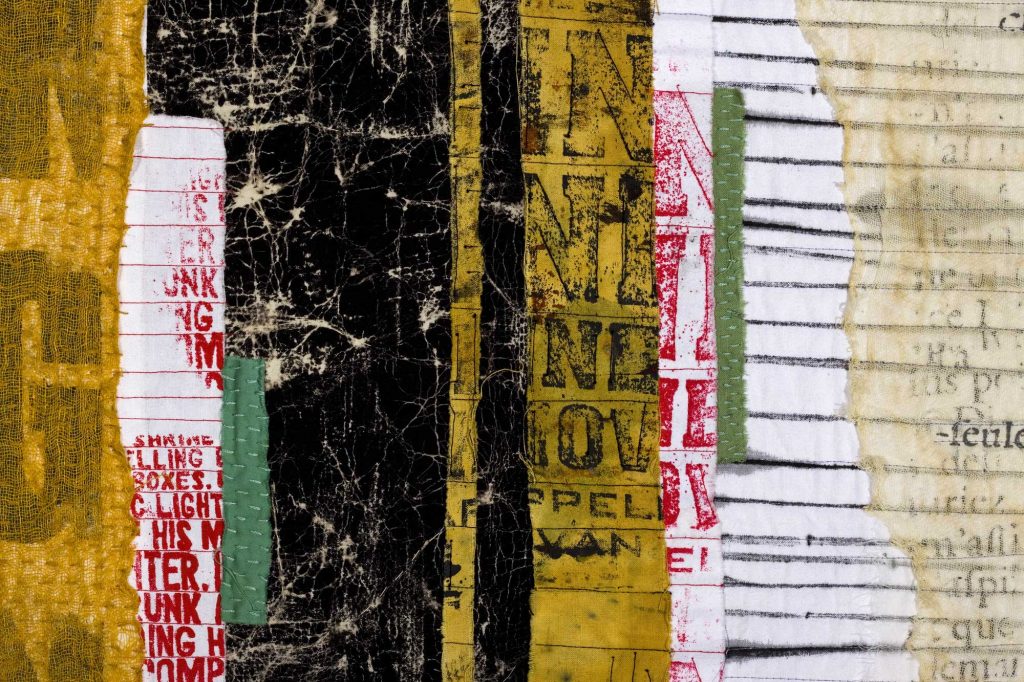
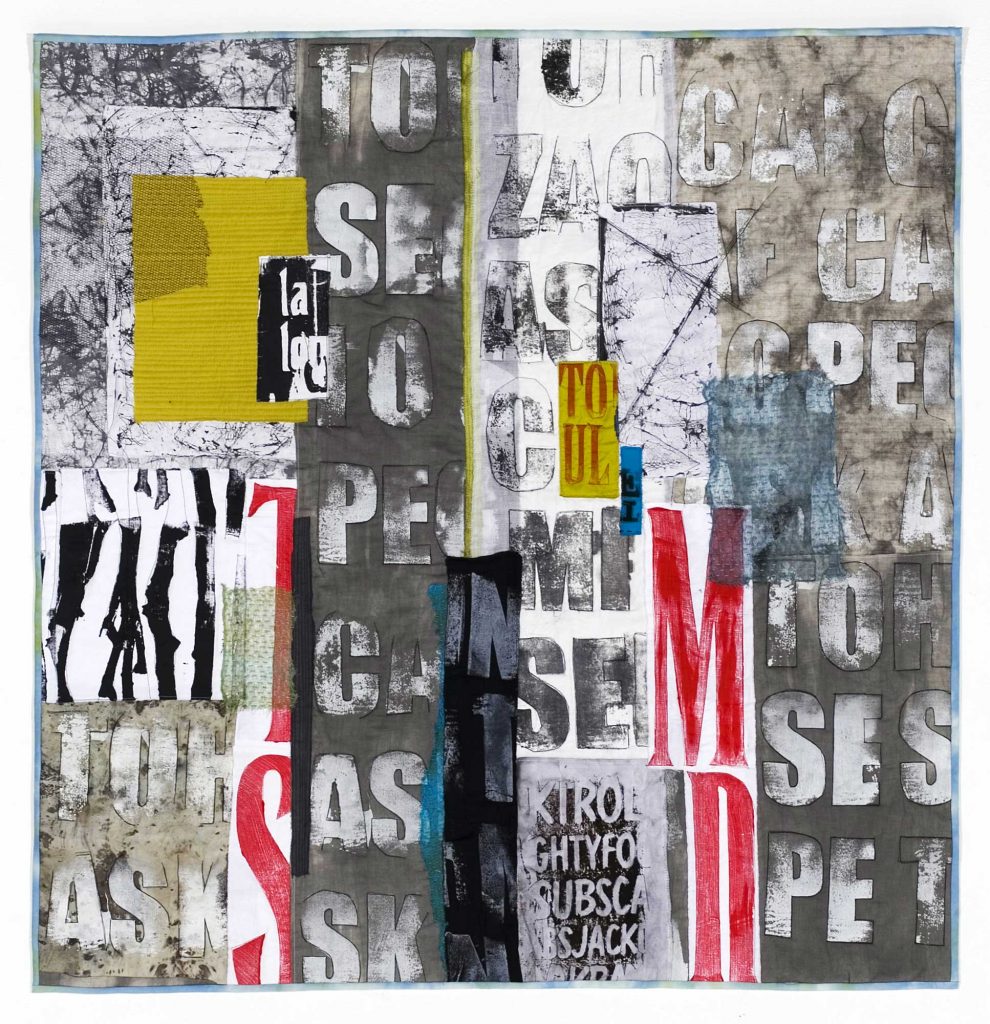
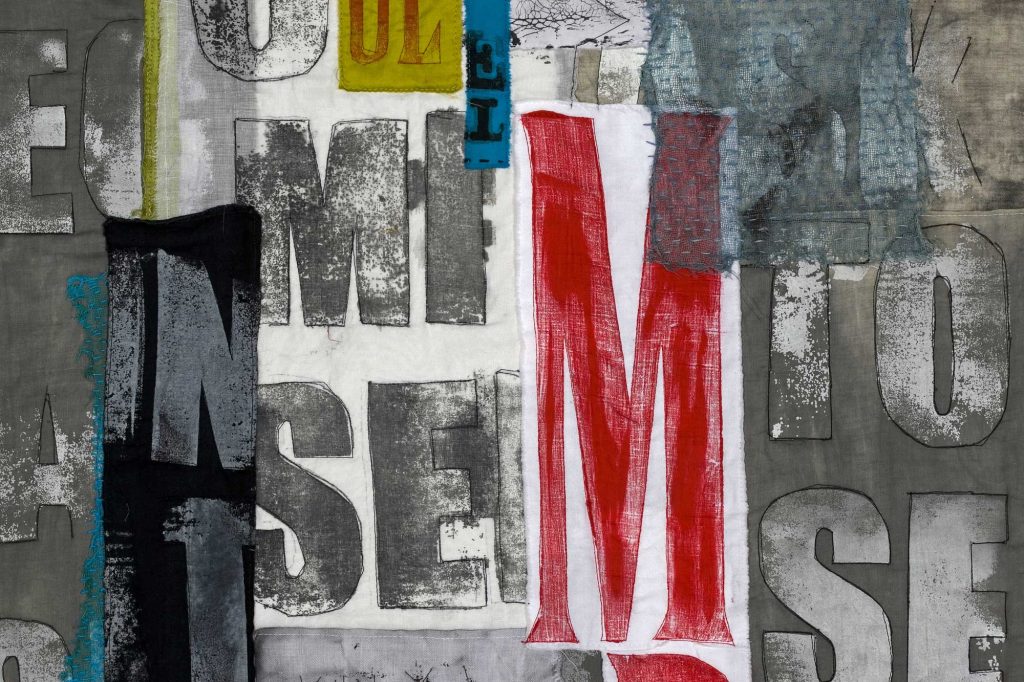
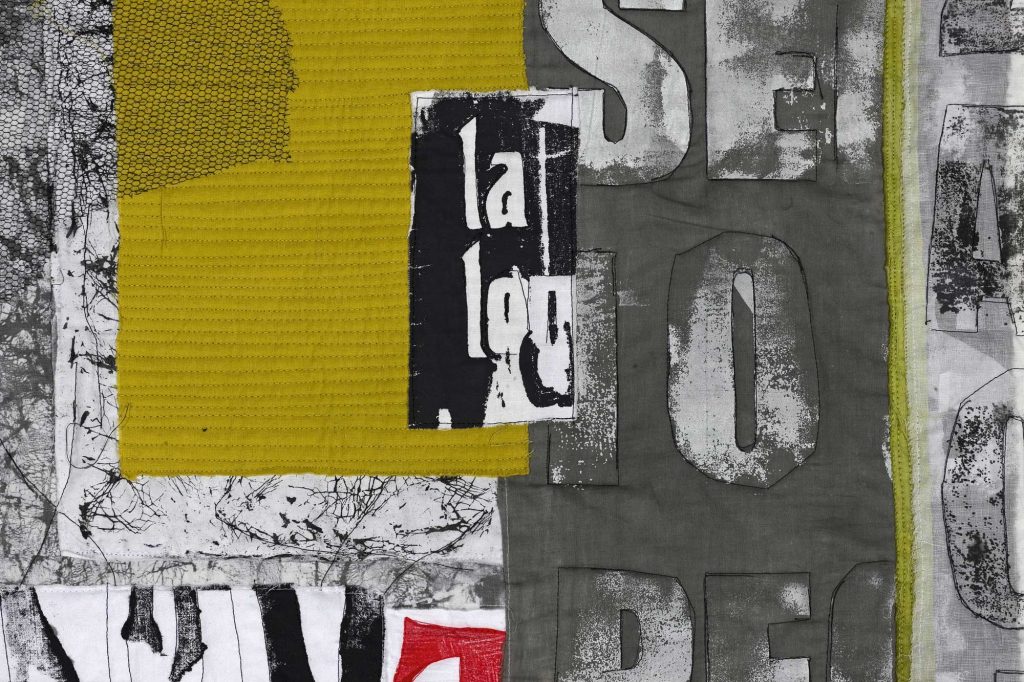
You currently work with lots of different mediums – do you have a favourite? Is there any advice you could give to our students regarding finding their favourite mediums?
Do lots of work. Do something creative every day, even if you only can spare 15 minutes. I believe that regularity is more important than the amount of time. Don’t make excuses for not working. Make something with the time, space and materials that you have right now, and look for inspiration outside the textile world. Look at paintings, photographs, sculptures, ceramics, etc.
The goal is to reach a point in your process, where what you create feels RIGHT. It is making work you want to share with the world. Making work you are proud of and developing confidence in yourself, in your process and in your end result.
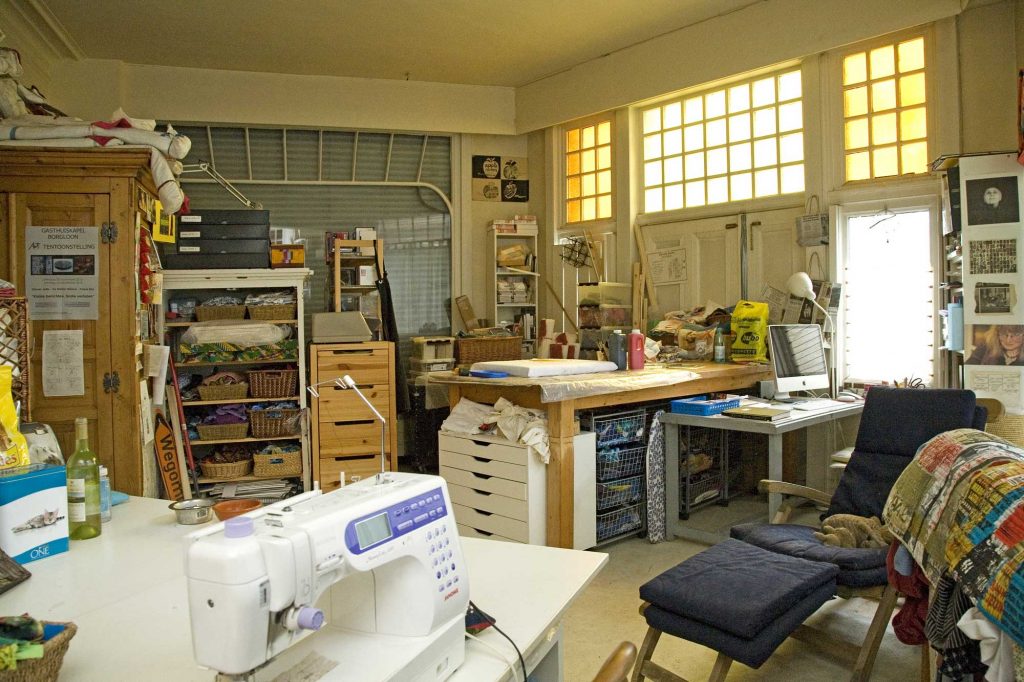
What artists inspire you personally – who would you like to sit next to at a dinner party?
Having studied art history, there are so many artists I admire, but my absolute favourite is the Danish painter Vilhelm Hammershoei (1864 – 1916), I would be happy dining alone with him.
He paints interior settings in very subtle colours of white, grey, black and brown. His paintings evoke a sense of contemplation and quiet serenity. Very little happens in his paintings, but you feel a great deal, when you are in front of them. A sense of closeness and intimacy and the magic effect of light keeping the world at large and at a distance.
I am always striving for simplicity and for ‘less is more’ – it might not always be obvious in my pieces – but I keep striving, and Hammershoei helps me remember.
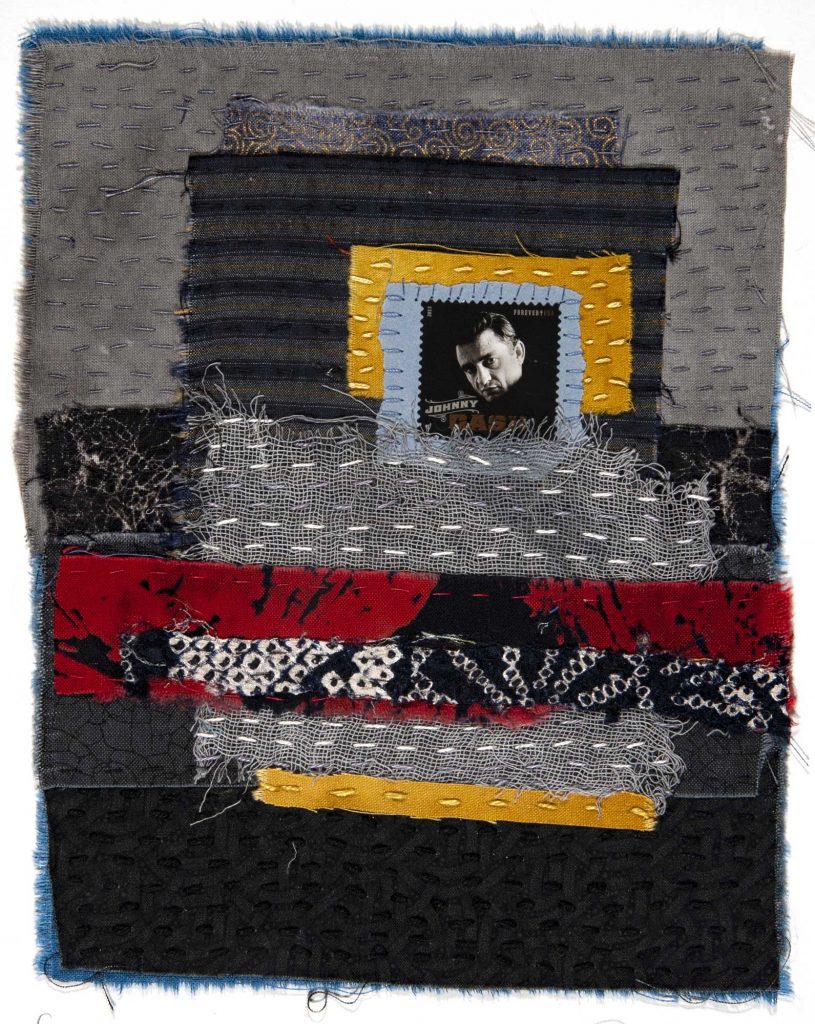
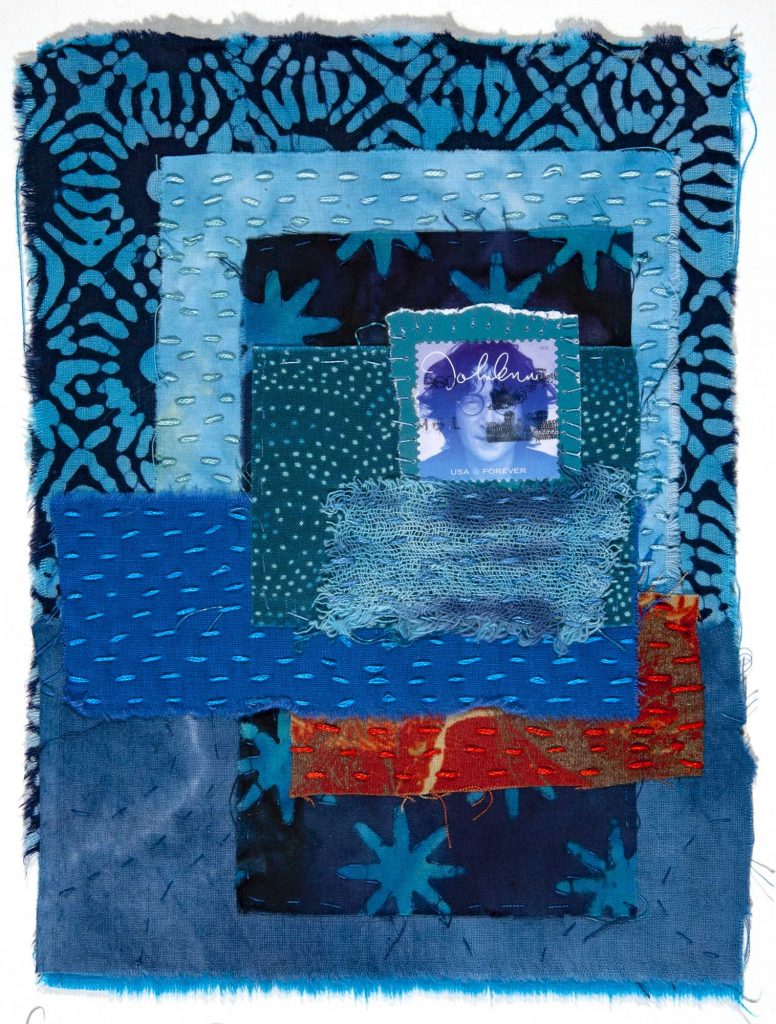
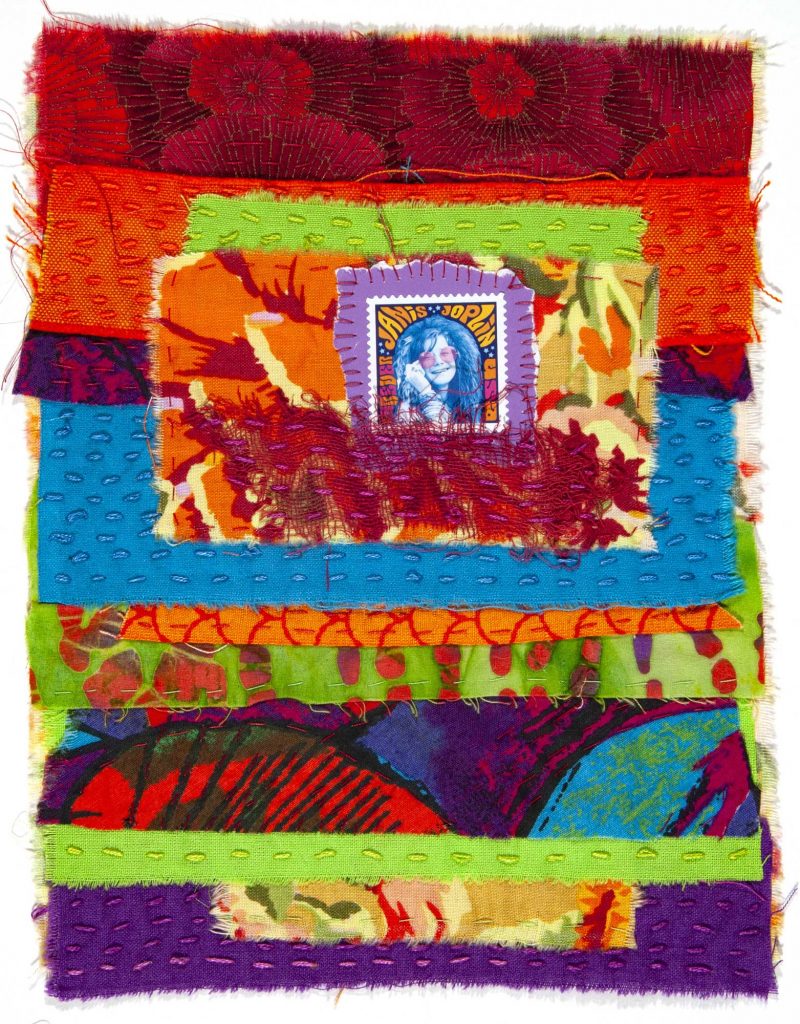
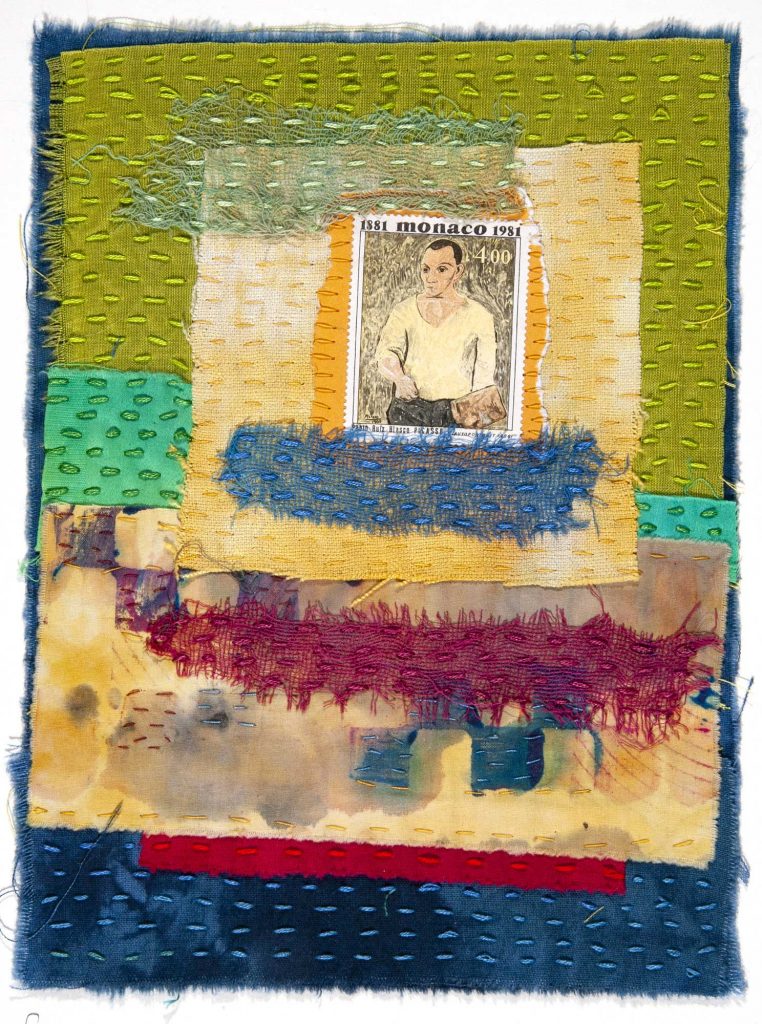
What’s next? Do you have exhibitions or new books underway that you could tell us a little about?
I have been a member of the European group Quilt Art since 2000. The group has existed for 33 years, and we just opened 2 new traveling exhibitions, Material Evidence and Traces and published an accompanying book.
I’m also preparing for an exhibition at the High Five Art Gallery in the Netherlands in September and October and in November I’ll travel to Australia (for the fifth time) for my exhibition at the Timeless Textile Gallery in Newcastle and to teach workshops.
Follow Jette Clover by visiting her website.

